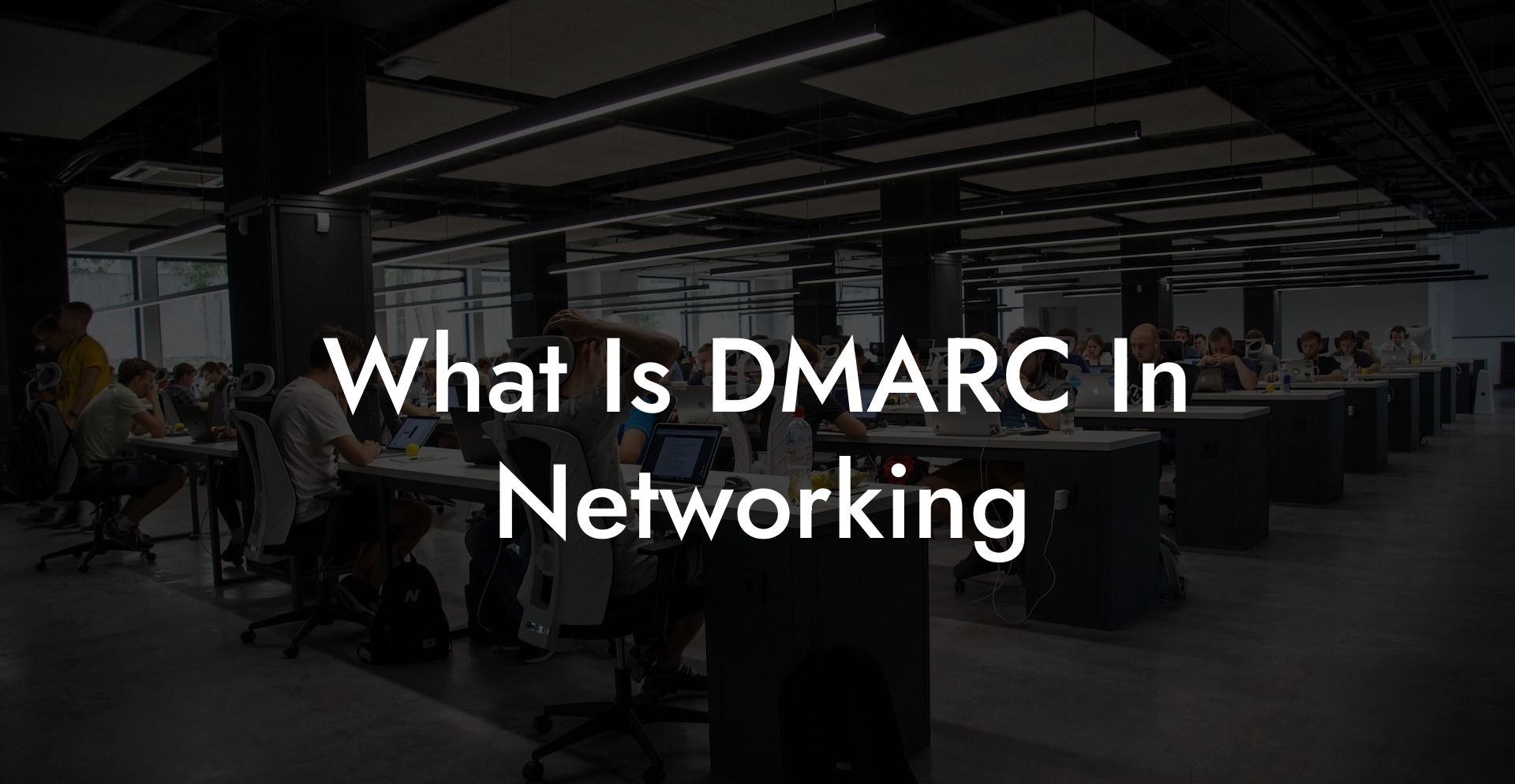In the world of cybersecurity, it's essential to ensure that your emails are safe from phishing attacks and other malicious activities. One way to do this is by implementing Domain-based Message Authentication, Reporting & Conformance (DMARC) in your networking strategy. But what exactly is DMARC and how does it work? In this guide, we'll delve into the details, showing you the importance of DMARC in protecting your email system, as well as providing a comprehensive understanding of this essential security measure.
What Is DMARC In Networking Table of Contents
Understanding DMARC
DMARC is an email authentication protocol that helps protect both email senders and recipients from email spoofing, spam, and phishing attacks. It works in conjunction with two other widely-used email authentication methods called SPF (Sender Policy Framework) and DKIM (DomainKeys Identified Mail).
How DMARC Works
Protect Your Data Today With a Secure Password Manager. Our Top Password Managers:
DMARC uses both SPF and DKIM to verify emails' authenticity, ensuring that only legitimate emails from your domain reach your recipients' inboxes while preventing unauthorized ones from doing so. The protocol then defines what to do with unauthenticated emails, either quarantining or rejecting them outright, based on the policy set by the domain owner.
Components of DMARC
- DMARC Policy: A DMARC policy is a set of rules that a domain owner creates and publishes in a DNS (Domain Name System) record. This policy dictates how receiving mail servers should handle emails that fail DMARC authentication checks.
- DMARC Alignment: DMARC alignment ensures that the domains in SPF, DKIM, and the email "from" header align with the actual sender's domain. This process reduces the possibility of spoofing and helps in maintaining the domain's reputation.
- DMARC Reports: DMARC generates two types of reports — aggregate and forensic. Aggregate reports are sent regularly to the domain owner, providing an overview of the DMARC compliance status of their emails, while forensic reports are sent when an email fails the DMARC check, offering detailed information about the incident.
Benefits of DMARC
- Enhanced Email Security: DMARC significantly reduces the risk of phishing attacks, spoofing, and spam emails, ensuring that your recipients receive genuine correspondence from your domain.
- Improved Deliverability: A DMARC authenticated email is more likely to be accepted by receiving servers, resulting in higher deliverability rates and thus reaching your intended recipients more effectively.
- Increased Domain Reputation: Since DMARC ensures that only legitimate emails from your domain are allowed, your domain reputation is greatly improved, further enhancing inbox placement rates.
- Comprehensive Reporting: With detailed DMARC reports, you can gain insights into your email delivery performance and proactively identify and rectify any issues in your email authentication settings.
What Is DMARC In Networking Example:
Imagine a scenario where company XYZ is using email as a primary communication method with its clients. Unfortunately, cybercriminals are attempting to take advantage of XYZ's reputation by sending phishing emails impersonating the company's domain, causing security concerns and tarnishing its image.
To mitigate this issue, XYZ decides to implement DMARC. They first create a DMARC policy specifying that mail servers should quarantine any emails failing the DMARC checks. After a few weeks of monitoring their DMARC reports, they can identify the sources of unauthenticated emails and take additional measures to prevent further phishing attempts.
During this period, the company notices a significant drop in phishing incidents, higher email deliverability rates, and improved overall communication with their clients. Satisfied with the results, company XYZ upgrades their DMARC policy so that unauthenticated emails are now rejected instead of quarantined, providing even stronger security for their email system.
By implementing DMARC, you can safeguard your email communication and domain reputation from cyber threats. Take the steps to better protect both your business and your customers with this powerful security measure. We hope this guide offers a comprehensive understanding of DMARC in networking, enabling you to make informed decisions about your email security practices. If you found this article helpful, share it with others who might benefit, and feel free to explore our other guides on the Voice Phishing blog for more essential cybersecurity insights.
Protect Your Data Today With a Secure Password Manager. Our Top Password Managers:















